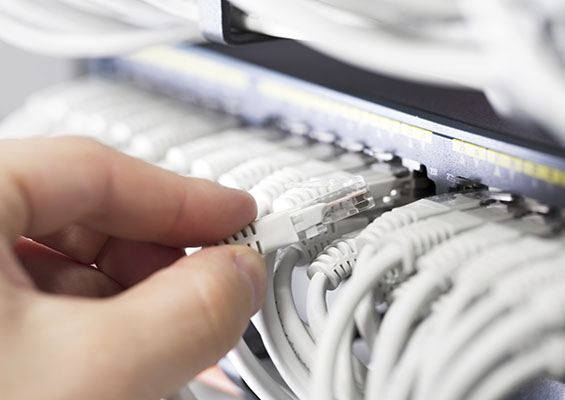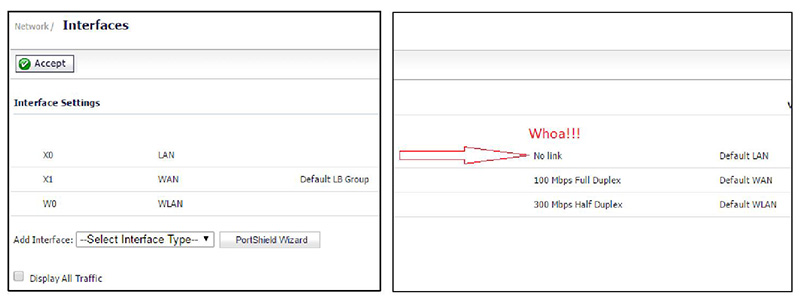by
Angela M. Saylor
| May 26, 2017

I’ve worked in the field of networking and customer service for nearly two decades, and one of the most common questions I get is, “How can I be successful in a help desk position?” It seems like a really simple answer, right? All you need to do is fix the customer’s problem! But I’ll be honest with you; fixing the problem is the easy part. The harder part is merging those technical skills with customer support skills.
Ask Questions
Let’s talk a little bit about an issue that I needed to solve a few weeks ago. A customer, Jim, called me because networking services weren’t working. When a call like this comes in, it’s important to get a very clear picture of what is happening by asking questions and restating what you are told to confirm the facts.
- What machines or users are affected?
- When did you first notice the issue?
- How long has it been going on?
- Have there been any changes on the network?
In this particular instance, Jim was able to access the internet on his computer, but he could not connect to the internal server. Right away, a picture began to emerge of what the issue might be – there’s probably something going on with the server. This is why questioning the user thoroughly is critical before taking any actions and why it’s the first step in the general troubleshooting theory.
Investigate
Questioning Jim about whether or not anyone else was affected revealed that other users in the building were also having trouble, but their troubles were different. They didn’t have a problem getting to their documents on the server, but they could not access the internet. How could this be? If the server was down, it would probably be down for everyone, not just Jim.
I asked Jim for the model number of his machine. A simple Google search of any model number will give you detailed specs that help in troubleshooting. It turns out that Jim was using a laptop and connecting through the wireless network in the building, not the wired. To access the server, he opens his virtual private network (VPN) client to securely connect to the local network. The customer isn’t always going to be aware of what information is relevant and what isn’t. From the customer’s point of view, it just doesn’t work. This is where asking the right questions helps us connect the dots to work toward a solution.
Build Customer Confidence
Now that I had a clearer picture of Jim’s issue, the next step wasn’t necessarily to get right into a solution. First, it’s important to empathize with the customer’s feelings about the problem and build confidence in your ability to solve it, even if you aren’t feeling terribly confident or knowledgeable about it. You can use phrases like, “That’s incredibly interesting. I can’t wait to research it,” to express your desire to fix the problem.
My personal favorite when customers are upset is, “Don’t worry. I promise that it’s all fixable.”
The statement is so simple, yet so truthful that I’ve found it will calm down even the most stressed customer. Using phrases that express your genuine interest in finding the answer will take you far in any help desk you work. Enjoy the process! This is why we’re here!
Let’s get back to Jim’s network troubles. I now knew that it was unlikely that the server was having problems. The issue was somewhere in the network itself, and from the answers Jim gave me, I had a pretty good idea where to look. Jim already had his own theory based on some work that I’d done for him in the past, and that’s something that you will run into a lot. Customers who have even a passing interest in technology will try to solve problems on their own. It’s important to acknowledge the extra information the customer is giving you, but not to get distracted by it. Parsing what is critical and what is fluff is something you will learn as you gain more experience in troubleshooting.
Take Notes
Given that Jim already had formulated his own theories, I asked what troubleshooting steps he had taken. He revealed that this all started because he couldn’t access the internet. So, he went into the wiring closet and power cycled all of the equipment.
That solved his internet problem, but he now had a new problem of server access. Information, information, information – and most of it not in the order it happened! Write things down. You will thank yourself later when you are researching issues. You probably have access to a ticketing system, and your employer will expect you to put all the relevant information in there, but I suggest also getting a notebook and taking handwritten short notes while you are troubleshooting. It serves as a portable record for you, and there’s something about the relationship between hand and brain when you actually write something down that I think improves the recollection process.
Resolve the Issue
Let’s go over the facts that we know so far about Jim’s issue. A lot of this can be translated into many other connectivity problems you will run across:
- Jim’s initial problem was that he could not access the internet on his laptop, which was connected wirelessly to the network.
- Jim entered the wiring closet and power cycled the equipment.
- Afterward, Jim could access the internet but could not access the server.
- Other users in the building still had no access to the internet, but they were able to access the server.
We have enough information to formulate a theory. The problem is network related, and it’s somewhere between the wireless router and the switch. Let’s run with the theory that there’s a disconnection. To confirm, I remotely logged into the router. This particular customer used a Sonicwall TZ205, which has an elegant graphical user interface (GUI) interface. Upon logging in, I discovered that the local area network (LAN) interface was disconnected. The image below is representative of what you’ll see in many routers that you might need to administer.

The next step is of course, to test the theory, and this leads into more customer confidence building. One of the most important skills you can learn is how to describe things to a customer who may not be technically savvy. I asked Jim to enter the wiring closet and look for the small white box that had the brand name Sonicwall on the top. I requested that he pick up the device and look for the wire that is connected to the jack labeled LAN\X0 and trace that cable from the Sonicwall box to its destination. What do you know? Jim had knocked the cable loose when he reset all the equipment earlier, and reseating it brought the entire network back to life.
Wrap It Up
Yes, it was really that simple, and a good 80 percent of the calls you will take will be just that: technologically simple to fix as long as you get all the information and don’t waste a lot of time chasing down non-issues, like we might have done had we investigated the server angle before getting more details from Jim. The other 20 percent? You’ll use the “incredibly interesting” phrase a lot.
We’ll never know what exactly started the whole chain of events. It could have been a minor blip at the internet service provider (ISP) or perhaps the modem lost sync with the central office. Jim’s computer could have just been delayed in getting its dynamic host configuration protocol (DHCP) address from the router. Whatever the reason, we do know what solved the second problem, and now we also know that we may want to visit the site in the future to check the quality of the cables. Time to get our tools together!
The last thing I am going to leave you with is a little practical advice. As long as your business policy allows it, I recommend saving a copy of the settings whenever you connect to a device, even if you don’t make any changes. Rename and date the file and stick it somewhere in a secure location. As you progress at your company, you will be armed with a detailed history of notes and an arsenal of backups that will help you to solve any future problems you come across.
Good luck out there in the field, and never stop learning.
Device connectivity issues like this one are covered by CompTIA A+. Download the exam objectives to see what other topics this certification covers and if it’s right for you.